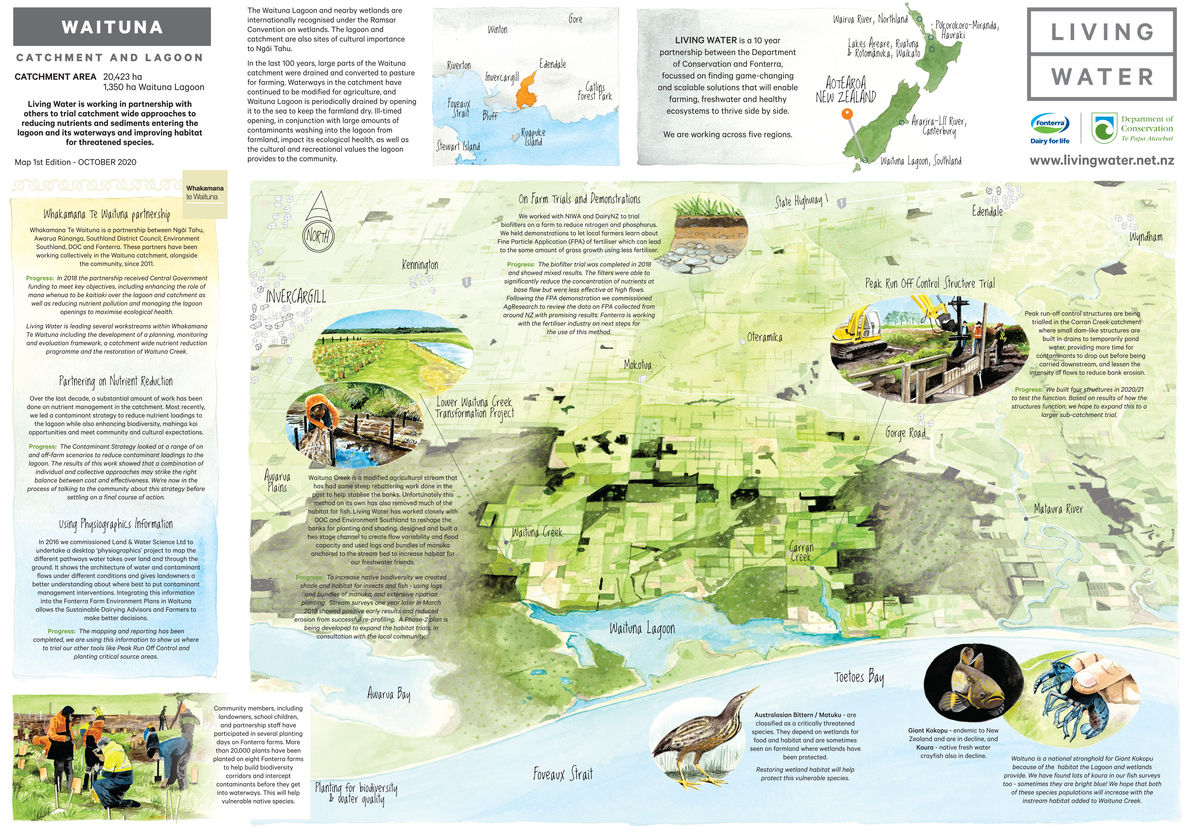-0-322-0-215-crop-aspect.jpg?k=4a04dfaefe)

Waituna Lagoon progress map
Waituna Lagoon catchment facts
About the area
Waituna Lagoon is 40km east of Invercargill and is part of the 20,000 hectare Awarua Waituna Wetland catchment. This coastal lagoon and surrounding wetland (an area of 3,500 hectares) was designated a Ramsar Wetland of International Importance in 1976. The Ramsar Convention is an intergovernmental treaty providing the framework for national action and international cooperation for the conservation and wise use of wetlands and their resources.
The cultural significance to the local Ngāi Tahu people was recognised under a Statutory Acknowledgement with the Ngāi Tahu claims Settlement Act 1998. The lagoon and wetland have also been a source of food and recreation for the wider community including fishermen, hunters and trampers over many generations.
The wetlands provide habitats for a rich array of native wildlife and are a nationally important site for migrating wading birds. They are also home to a range of threatened species such as the Australasian bittern and are an important area for mahinga kai.
The challenge
In Awarua Waituna there has been a significant loss of wetland, freshwater ecosystems and lowland habitat. Water quality is poor due to high levels of suspended sediment and nutrients (phosphorous and nitrogen). Much of this has been caused by various productive land uses in the catchment and the modification of the waterway, wetland and lagoon hydrology for drainage purposes.
Working in partnership
Living Water is working within the Whakamana Te Waituna Partnership to improve the health of Waituna lagoon - ensuring the wellbeing of the people, the land, the waters, the ecosystems and the life-force of Waituna.
Living Water’s key focus is designing and implementing a catchment-wide nutrient and sediment management approach, with the main goal of slowing the flow of water to decrease contaminants and build freshwater habitat.
Projects include trialling a nutrient and sediment reduction approach at a sub-catchment scale, developing detailed Farm Environment Plans for all 43 Fonterra farms in the catchment; and implementing the Lower Waituna Creek Transformation Project as a demonstration site.
At a glance
- 70% converted from wetland and native bush to agricultural land over the past 150 years
- 80+ different species of bird in the wetland complex
- 130 properties in the catchment
- 5 main types of farming (arable, forestry, sheep, beef and dairy)

-0-322-0-215-crop-aspect.jpg?k=7d97cbfb0c)